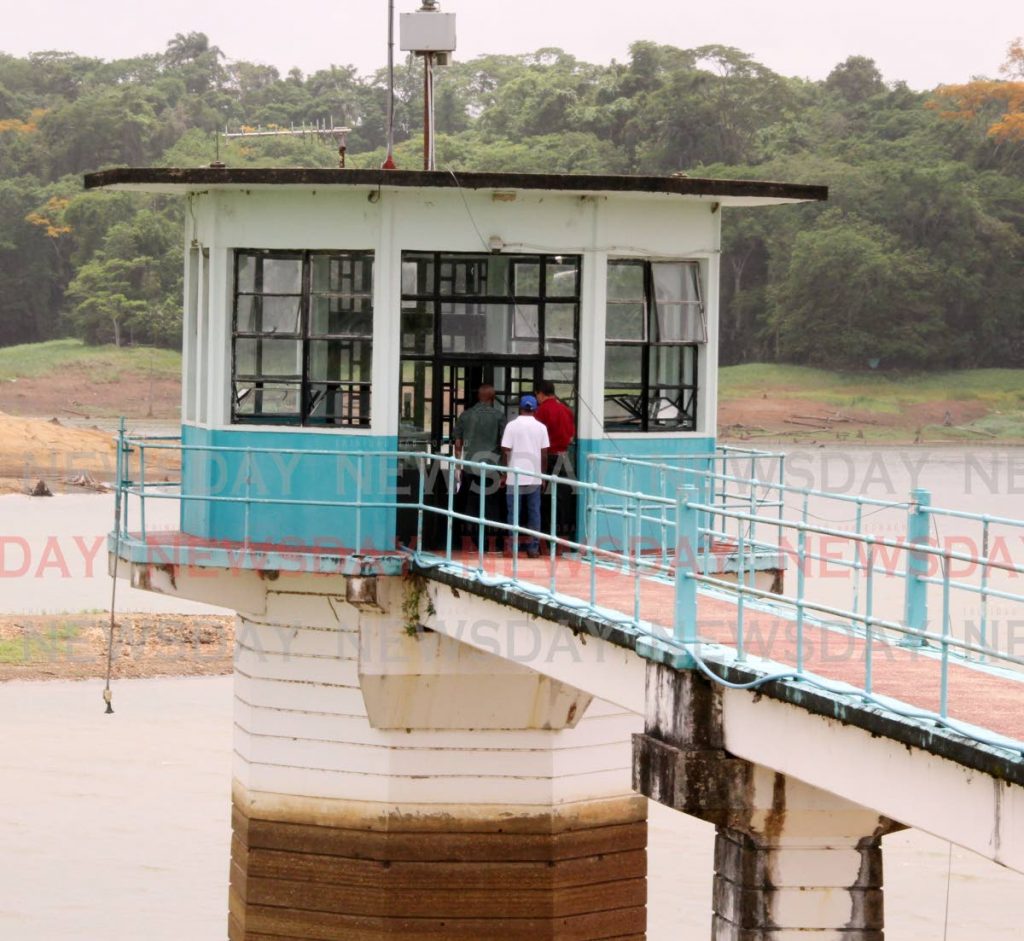WASA: Water levels still low even in rainy season

WASA is strongly advising customers to continue using water conservation strategies since levels at dams remain low even in the midst of the rainy season.
The authority, in a press release on Sunday evening, said that one month into the rainy season, storage levels at its major reservoirs remain below long-term averages (LTAs), owing to extremely harsh dry seasons in 2019 and 2020, with a drier-than-normal 2019 rainy season.
Significantly affected reservoirs are Arena, Hollis and Navet. WASA said that for this year's dry season (January to May), there were rainfall deficits at all major water treatment facilities including: Caroni-Arena - 31.6 per cent deficit; Navet - 40.3per cent; Hollis - 40.3 per cent; and Hillsborough, which recorded a 29.4 per cent deficit.
Although rainfall for this June was near normal when compared to LTAs (ie 232, 330, 279 and 142 mm at Arena, Navet, Hollis and Hillsborough respectively), this has not reversed the downward trend as seen in the following comparisons from June 1-July 3 of this year:
JUNE 1 LAKE HEIGHT LTA
Arena 21.73% 51.86%
Navet 27.41% 47.78%
Hollis 21.05% 42.84%
Hillsborough 56.58% 54.82%
JULY 3 LAKE HEIGHT LTA
Arena 19.43% 54.91%
Navet 22.47% 51.65%
Hollis 18.77% 53.80%
Hillsborough 42.40% 54.672%
This prevailing situation, WASA said, continues to have an adverse impact on water availability at the Caroni, Navet and Hollis water treatment plants, with production being reduced from the normal 75 to 30 million gallons per day (mgd) at Caroni; from 19.8 mgd to 15.0 mgd at Navet; and 8.4 to 4 mgd at Hollis.
As a result, customers in several areas, particularly at the extremities or high points of these water distribution systems, have been and will continue to be adversely affected.
These include customers supplied by the Caroni water treatment plant such as the upper areas of Champs Fleurs, Santa Cruz, Barataria, Laventille, Belmont, Cascade and St Ann's in the north, as well as Longdenville, Dow Village, Freeport, Claxton Bay, La Romaine, Cocoyea, Penal, Debe, in Central and southwest Trinidad.
Communities in southeast Trinidad supplied by the Navet water treatment plant, including Mayaro, Rio Claro, Biche, Williamsville, New Grant, Princes Town and Barrackpore are also affected, along with customers in parts of Arima, D’Abadie and Arouca, supplied by the Hollis water treatment plant.
To mitigate the ongoing shortfall, WASA has maintained all measures in its 2020 Water Supply Management Plan, which are aimed at maximising water production, decreasing unaccounted-for water and reducing demand.
These include further adjustments to water supply schedules, which will be published on WASA’s website and social media platforms (Facebook, Twitter and Instagram); improved response to leak repairs; and increased water trucking, particularly to communities at the extremities and high points of the distribution system.
WASA water use restrictions remain in force until further notice.


Comments
"WASA: Water levels still low even in rainy season"